Patiala district is one of the famous princely states of erstwhile Punjab. Forming the south-eastern part of the state.With the active patronage of the erstwhile rules of Patiala, a well established style of Hindustani music called ‘the Patiala Gharana’ came into existence and has held its own up to the present times. This school of music has had a number of famous musicians, many of whom came to Patiala after the disintegration of the Mughal Court at Delhi in the 18th century.
How to reach here:
By Air : Chandigarh airport is the nearest airport.
By Rail: Although there is a railway station at Patiala but it is not very well connected by Rail because it doesnot falls on main line. Delhi Bathinda intercity is the best train for Patiala.The nearest well connected Railway station is Ambala ( UMB).
Best time to visit: Throughout the year.
Languages spoken: Puadhi, Punjabi, Hindi and English.
Must eat: Lassi
Famous Restaurants: Mohan continental, Dhillon, Suraj
Places you must see:
Qila Mubarak Complex Located at the heart of Patiala. It is a rampart fort cum palace and is a rare and superb example of Sikh Palace architectural style in India. It was constructed under the benevolent auspices of Maharaja Ala Singh in 1764.The whole complex comprises of Ran Baas (guest house) and the Darbar Hall. Besides, it also has Quila Androon, with an underground sewerage system within the Quila. Outside the Qila are the Darshani Gate, a Shiva temple, and bazaar shops which border the streets that run around the Qila and sell precious ornaments, colorful hand-woven fabrics, ‘jootis’ and bright ‘Parandis’.
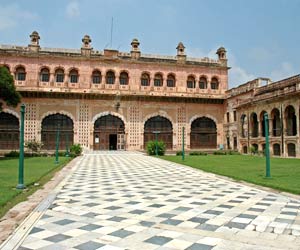
Qila Androon complex has 10 courtyards along the north - south axis and each courtyard is unique in size and character, some being broad, others very small and still others mere slits in the fabric of building.Though the Androon is a single interconnected building, it is spoken of as a series of palaces. Each set of rooms makes a cluster around a courtyard, and each carries a name: Sheesh Mahal, Toshakhana, Jalau Khana, Chand Mahal, Rang Mahal, Treasury and Prison. Ten of the rooms are painted with frescoes, or decorated intricately with mirror and gilt. In a tiny portion of the complex is a little British construction with Gothic arches, fire places made of marble and built-in toilets perched on the Mughal Rajasthani roof!. Burj Baba Ala Singh even today has a fire smoldering ever since the time of Baba Ala Singh, along with a flame brought by him from Jwalaji.

Rang Mahal and Sheesh Mahal contains a large no. of frescoes, most of which were made under Maharaja Narender Singh. Within the Qila Mubarak are 16 painted and mirror-worked chambers. For instance, the Darbar room is illustrated with Vishnu avatars and stories of courage or generosity, the ladies' chamber with illustrations from famous romantic epics, and two other chambers with illustrations of the qualities of a good or bad king. The frescoes, among the finest painted in India in the second half of the 19th century are evidently the work of artists from Rajasthani, Pahari and Avadhi traditions.
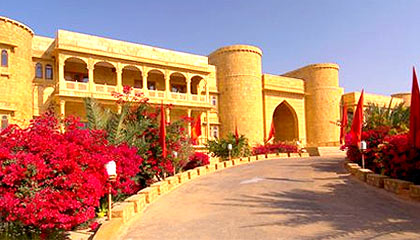

Ran-Baas building was probably a guest house. It has an imposing gateway and two courtyards, both with fountains and small tanks. A room in the first courtyard-with painted walls and a gilt throne-was probably for semi -formal audience. A few pavilions are set among painted walls on the upper storey. Facing each other across the courtyard are two exquisite chambers, one painted and the other decorated with mirror work.

Darbar Hall (Divan Khana) has been converted into a museum displaying dazzling chandeliers and armor, including the sword and dagger of Guru Gobind Singh and Nadir Shah's sword. The hall was built on a high plinth over a network of tunnels which were service conduits. The facade gives the impression of a double-storey building, with 'upper storey' windows and a balcony at the first floor level, but the delicately worked wood-and-glass doors open into a huge 15m-high chamber. At the far end is a raised platform, where the Maharaja sat . The wooden frame work of the ceiling holds decorated Plaster-of Paris tiles painted in Arabic style and the ceiling is hung with a fabled collection of chandeliers.

Jalau Khana and Sard Khana (Cool Room): The Jalau Khana is a small, two storeyed building with a central hall in late Colonial style, where regalia were displayed. The Sard Khan provided an escape from the summer heat. A deep well inside it acted as a wind tunnel, bringing cool air into the ground-floor rooms and the basement. Outside, there is a formal garden with waterways and fountains.
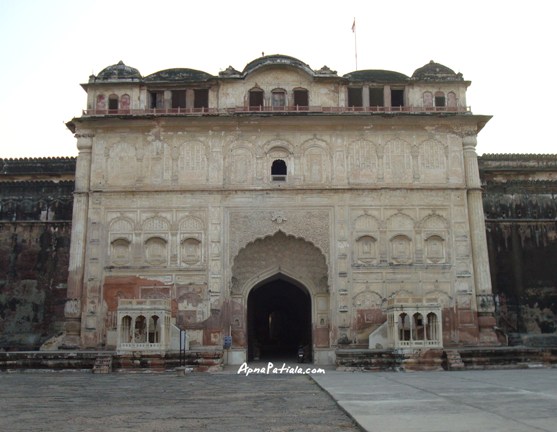

Lassi Khana (Kitchen) is a two-storeyed building with a central courtyard and a well.It adjoins the Ran-bass, and a passage links it to the Qila Androon. Local residents say that at one time this kitchen had the capacity to serve nearly 35,000 people every day, but following an economy drive, the Lassi Khana restricted itself to serving only a modest 5,000 people.
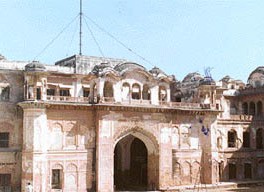
Shahi Samadhan is where Maharaja Rajinder Singh once built a garden, now holds cenotaphs of erstwhile rulers, looked after by a mahant.

Moti Bagh Palace was started during the reign of Maharaja Narinder Singh, it was completed under Maharaja Bhupinder Singh in the early 20th century. The Old Moti Bagh Palace now houses the National Institute for Sports. The facade has Rajasthan-style jharokas and chhatris, and the palace is set in a beautiful garden with terraces, water channels and a Sheesh Mahal.
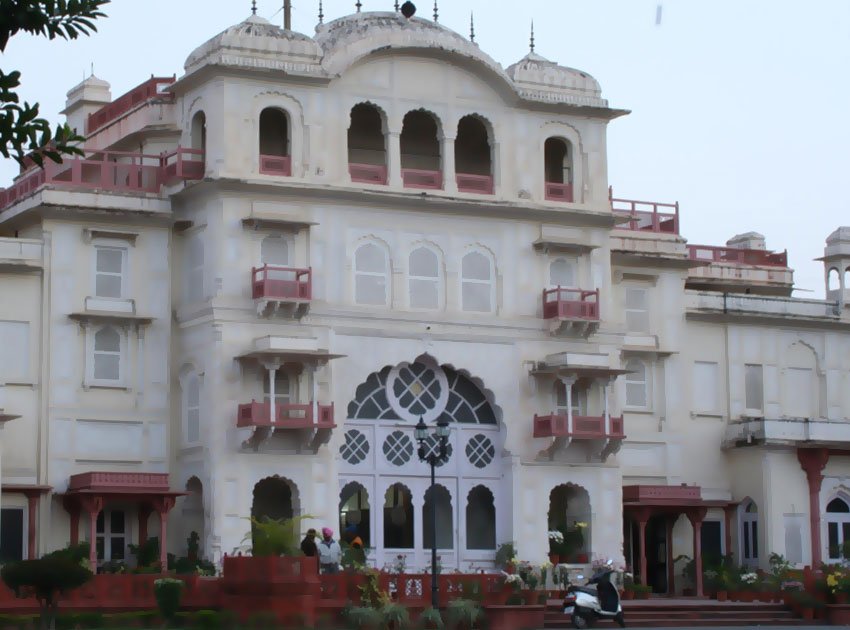
Sheesh Mahal was built behind the main Moti Bagh Palace to serve as a pleasure complex.The paintings in two of its well maintained , mirror-worked chambers are of Kangra and Rajasthani qalam, depicting the poetic visions of Keshav, Surdas and Bihari. The Sheesh Mahal now houses a museum, an art gallery, the famed medal gallery and also the North Zone Cultural Centre.

Lachman Jhoola is a magnificent suspension bridge which being a replica of the famous Lakshman Jhoola at Rishikesh, is also named as Lachman Jhoola. It links the Sheesh Mahal with the Banasar Ghar on the other side of the lake. The Banasar Ghar now houses the North Zone Cultural Center and a hall for setting up exhibitions.
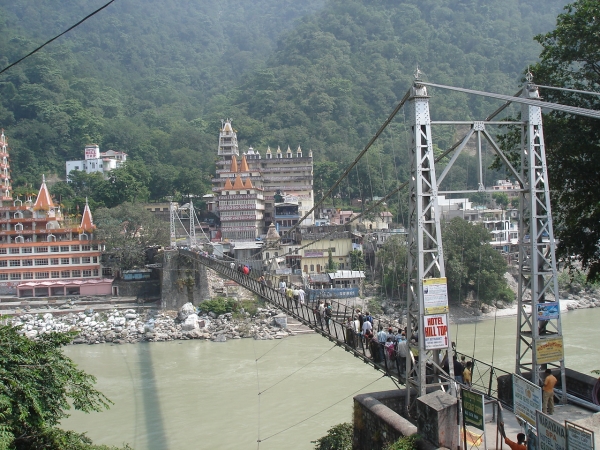
Bir Moti Bagh is a 1,600-acre forest on the outskirts of Patiala, The Bir was originally the hunting preserve of the Maharaja. Most of the Bir is still forest, but parts of it house a zoo and a deer park, as well as a pilot project on medicinal plants.

Rajindera Kothi: Set in the heart of the Baradari Gardens, this late 19th Century Palace built in colonial style by Maharaja Rajindra Singh till recently housed Punjab States Archives. PUDA is planning to exploit this building as a potential Heritage Hotel.

Baradari gardens surround the Baradari palace located in the north of old Patiala city, just outside Sheranwala Gate. The gardens, laid under Maharaja Rajindera Singh were planted extensively rare trees and shrubs, dotted with impressive Colonial buildings and a marble statue of Maharaja Rajindera Singh and the Fern House. The 19th century Fern House, a replica of the one in Calcutta forms a unique attraction along with quaint Rink Hall.

Ijlas-e Khas is intended to be the Administrative Secretariat of the princely state, this beautiful building now houses the offices of the Punjab State Electricity Board.

Gurudwara Dukhniwaran Sahib : The villagers of Lehal donated land for the modest Gurudwara built on this elevated site, said to have been visited by Guru Teg Bahadur. The legend is that anyone who prays at this Gurudwara is relieved of his suffering ('dukhniwaran'). A new bigger building is now being constructed.

Kali Temple : Maharaja Bhupinder Singh was inspired to build this temple and bring the 6-ft statue of Kali from Bengal to Patiala. This large complex attracts devotees, Hindu and Sikh, from distant places. A much older temple of Raj Rajeshwari is also situated in the center of this complex.
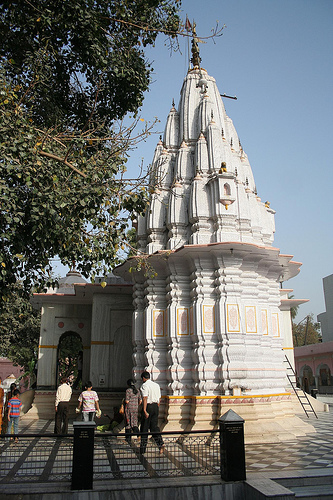
Qila Bahadurgarh : The ninth Guru Tegh Bahadur stayed at Saifabad during his travels. Originally known as Saifabad, it was renamed Bahadurgarh by Maharaja Amar Singh who reinforced and renovated it. The present fort dates back to Maharaja Karam Singh. He built a beautiful Gurudwara on the Patiala-Rajpura road (6 Km from Patiala City).

Panj Bali Gurdwara : Nawab Saif Khan, an admirer of Guru Teg Bahadur, Commemorated the guru's visit by building two gurudwaras, one inside the fort and the other across the road, now known as Panch Bali Gurudwara.

Maiji Di Sarai monument in the old city now houses the criminal investigation agency office.

How to reach here:
By Air : Chandigarh airport is the nearest airport.
By Rail: Although there is a railway station at Patiala but it is not very well connected by Rail because it doesnot falls on main line. Delhi Bathinda intercity is the best train for Patiala.The nearest well connected Railway station is Ambala ( UMB).
Best time to visit: Throughout the year.
Languages spoken: Puadhi, Punjabi, Hindi and English.
Must eat: Lassi
Famous Restaurants: Mohan continental, Dhillon, Suraj
Places you must see:
Qila Mubarak Complex Located at the heart of Patiala. It is a rampart fort cum palace and is a rare and superb example of Sikh Palace architectural style in India. It was constructed under the benevolent auspices of Maharaja Ala Singh in 1764.The whole complex comprises of Ran Baas (guest house) and the Darbar Hall. Besides, it also has Quila Androon, with an underground sewerage system within the Quila. Outside the Qila are the Darshani Gate, a Shiva temple, and bazaar shops which border the streets that run around the Qila and sell precious ornaments, colorful hand-woven fabrics, ‘jootis’ and bright ‘Parandis’.

Qila Androon complex has 10 courtyards along the north - south axis and each courtyard is unique in size and character, some being broad, others very small and still others mere slits in the fabric of building.Though the Androon is a single interconnected building, it is spoken of as a series of palaces. Each set of rooms makes a cluster around a courtyard, and each carries a name: Sheesh Mahal, Toshakhana, Jalau Khana, Chand Mahal, Rang Mahal, Treasury and Prison. Ten of the rooms are painted with frescoes, or decorated intricately with mirror and gilt. In a tiny portion of the complex is a little British construction with Gothic arches, fire places made of marble and built-in toilets perched on the Mughal Rajasthani roof!. Burj Baba Ala Singh even today has a fire smoldering ever since the time of Baba Ala Singh, along with a flame brought by him from Jwalaji.

Rang Mahal and Sheesh Mahal contains a large no. of frescoes, most of which were made under Maharaja Narender Singh. Within the Qila Mubarak are 16 painted and mirror-worked chambers. For instance, the Darbar room is illustrated with Vishnu avatars and stories of courage or generosity, the ladies' chamber with illustrations from famous romantic epics, and two other chambers with illustrations of the qualities of a good or bad king. The frescoes, among the finest painted in India in the second half of the 19th century are evidently the work of artists from Rajasthani, Pahari and Avadhi traditions.


Ran-Baas building was probably a guest house. It has an imposing gateway and two courtyards, both with fountains and small tanks. A room in the first courtyard-with painted walls and a gilt throne-was probably for semi -formal audience. A few pavilions are set among painted walls on the upper storey. Facing each other across the courtyard are two exquisite chambers, one painted and the other decorated with mirror work.

Darbar Hall (Divan Khana) has been converted into a museum displaying dazzling chandeliers and armor, including the sword and dagger of Guru Gobind Singh and Nadir Shah's sword. The hall was built on a high plinth over a network of tunnels which were service conduits. The facade gives the impression of a double-storey building, with 'upper storey' windows and a balcony at the first floor level, but the delicately worked wood-and-glass doors open into a huge 15m-high chamber. At the far end is a raised platform, where the Maharaja sat . The wooden frame work of the ceiling holds decorated Plaster-of Paris tiles painted in Arabic style and the ceiling is hung with a fabled collection of chandeliers.

Jalau Khana and Sard Khana (Cool Room): The Jalau Khana is a small, two storeyed building with a central hall in late Colonial style, where regalia were displayed. The Sard Khan provided an escape from the summer heat. A deep well inside it acted as a wind tunnel, bringing cool air into the ground-floor rooms and the basement. Outside, there is a formal garden with waterways and fountains.


Lassi Khana (Kitchen) is a two-storeyed building with a central courtyard and a well.It adjoins the Ran-bass, and a passage links it to the Qila Androon. Local residents say that at one time this kitchen had the capacity to serve nearly 35,000 people every day, but following an economy drive, the Lassi Khana restricted itself to serving only a modest 5,000 people.

Shahi Samadhan is where Maharaja Rajinder Singh once built a garden, now holds cenotaphs of erstwhile rulers, looked after by a mahant.

Moti Bagh Palace was started during the reign of Maharaja Narinder Singh, it was completed under Maharaja Bhupinder Singh in the early 20th century. The Old Moti Bagh Palace now houses the National Institute for Sports. The facade has Rajasthan-style jharokas and chhatris, and the palace is set in a beautiful garden with terraces, water channels and a Sheesh Mahal.

Sheesh Mahal was built behind the main Moti Bagh Palace to serve as a pleasure complex.The paintings in two of its well maintained , mirror-worked chambers are of Kangra and Rajasthani qalam, depicting the poetic visions of Keshav, Surdas and Bihari. The Sheesh Mahal now houses a museum, an art gallery, the famed medal gallery and also the North Zone Cultural Centre.

Lachman Jhoola is a magnificent suspension bridge which being a replica of the famous Lakshman Jhoola at Rishikesh, is also named as Lachman Jhoola. It links the Sheesh Mahal with the Banasar Ghar on the other side of the lake. The Banasar Ghar now houses the North Zone Cultural Center and a hall for setting up exhibitions.

Bir Moti Bagh is a 1,600-acre forest on the outskirts of Patiala, The Bir was originally the hunting preserve of the Maharaja. Most of the Bir is still forest, but parts of it house a zoo and a deer park, as well as a pilot project on medicinal plants.

Rajindera Kothi: Set in the heart of the Baradari Gardens, this late 19th Century Palace built in colonial style by Maharaja Rajindra Singh till recently housed Punjab States Archives. PUDA is planning to exploit this building as a potential Heritage Hotel.

Baradari gardens surround the Baradari palace located in the north of old Patiala city, just outside Sheranwala Gate. The gardens, laid under Maharaja Rajindera Singh were planted extensively rare trees and shrubs, dotted with impressive Colonial buildings and a marble statue of Maharaja Rajindera Singh and the Fern House. The 19th century Fern House, a replica of the one in Calcutta forms a unique attraction along with quaint Rink Hall.

Ijlas-e Khas is intended to be the Administrative Secretariat of the princely state, this beautiful building now houses the offices of the Punjab State Electricity Board.

Gurudwara Dukhniwaran Sahib : The villagers of Lehal donated land for the modest Gurudwara built on this elevated site, said to have been visited by Guru Teg Bahadur. The legend is that anyone who prays at this Gurudwara is relieved of his suffering ('dukhniwaran'). A new bigger building is now being constructed.

Kali Temple : Maharaja Bhupinder Singh was inspired to build this temple and bring the 6-ft statue of Kali from Bengal to Patiala. This large complex attracts devotees, Hindu and Sikh, from distant places. A much older temple of Raj Rajeshwari is also situated in the center of this complex.

Qila Bahadurgarh : The ninth Guru Tegh Bahadur stayed at Saifabad during his travels. Originally known as Saifabad, it was renamed Bahadurgarh by Maharaja Amar Singh who reinforced and renovated it. The present fort dates back to Maharaja Karam Singh. He built a beautiful Gurudwara on the Patiala-Rajpura road (6 Km from Patiala City).

Panj Bali Gurdwara : Nawab Saif Khan, an admirer of Guru Teg Bahadur, Commemorated the guru's visit by building two gurudwaras, one inside the fort and the other across the road, now known as Panch Bali Gurudwara.

Maiji Di Sarai monument in the old city now houses the criminal investigation agency office.

No comments:
Post a Comment